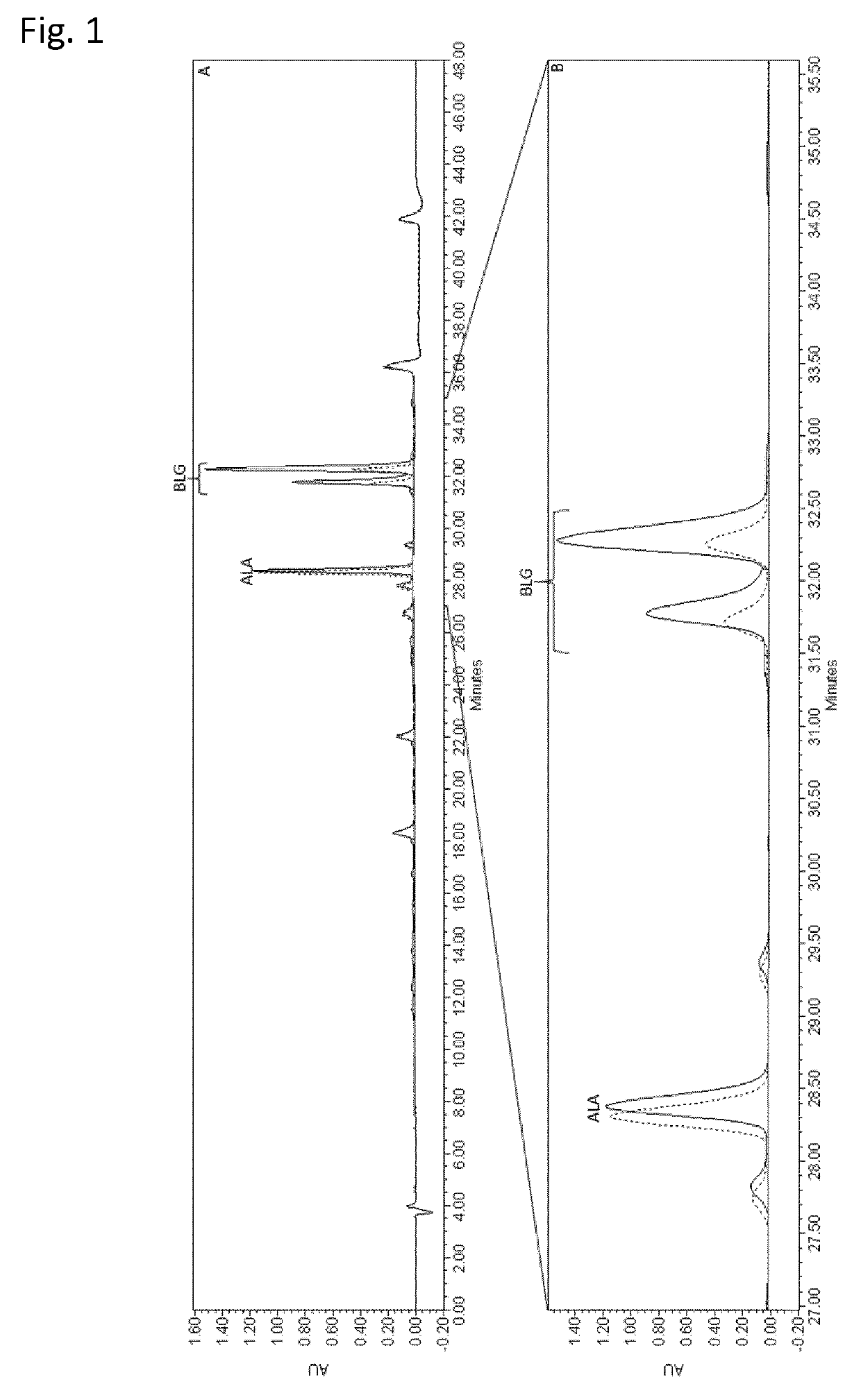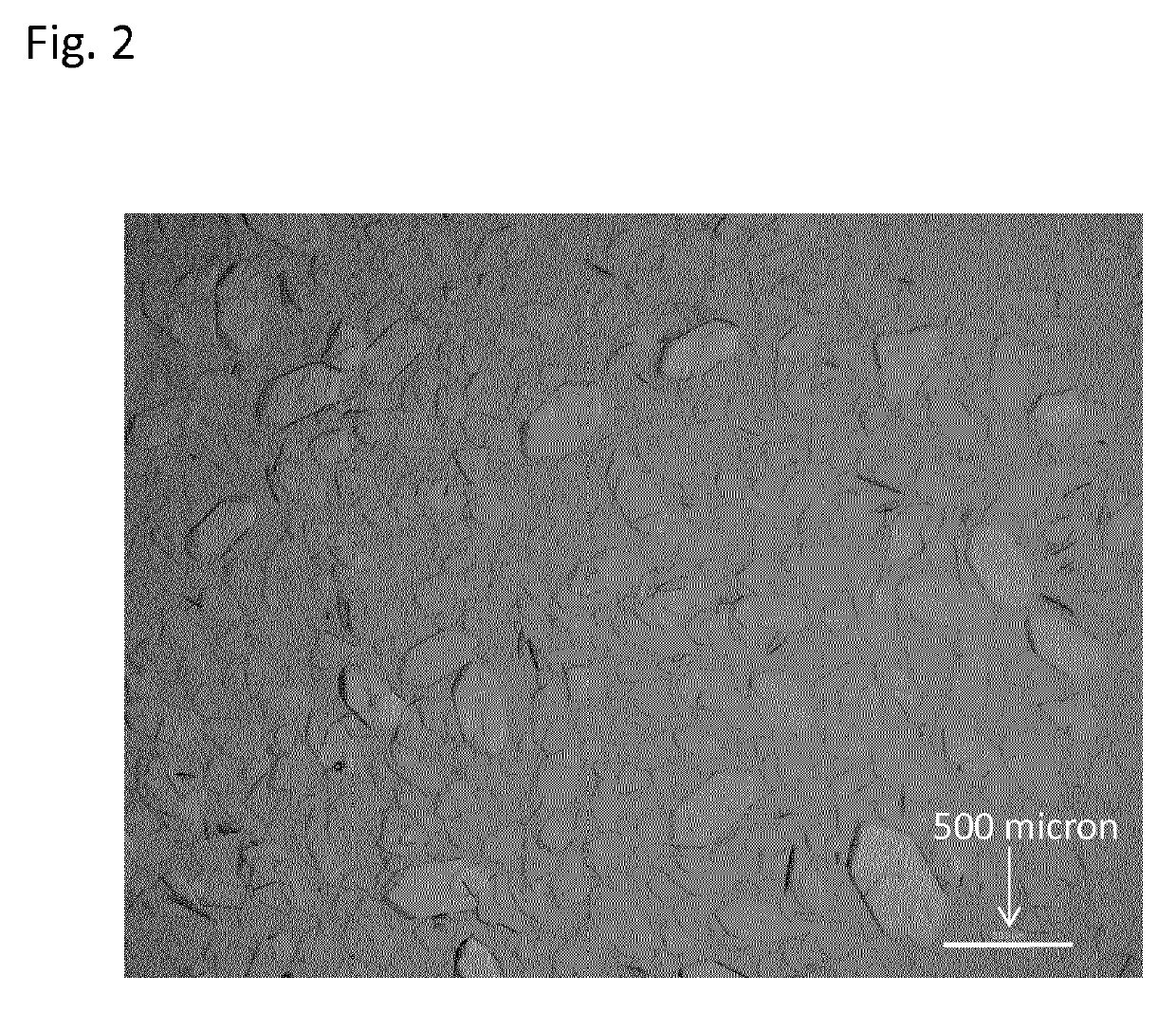Production of novel beta-lactoglobulin preparations and related methods, uses, and food products
a technology of beta-lactoglobulin and preparation, which is applied in the field of production of novel beta-lactoglobulin preparations and related methods, uses, and food products, can solve the problems of laborious and time-consuming process, incompatible with safe food production, and procedures disclosed in palmer, so as to facilitate powder handling, reduce dust, and improve the effect of bulk density
- Summary
- Abstract
- Description
- Claims
- Application Information
AI Technical Summary
Benefits of technology
Problems solved by technology
Method used
Image
Examples
example 1
Crystallization of Beta-Lactoglobulin From a Crude Whey Protein Concentrate
[0594]Protocol:
[0595]Lactose depleted UF retentate derived from sweet whey from a standard cheese production process and filtered through a 1.2 micron filter was used as feed for the BLG crystallization process. The sweet whey feed was conditioned on an ultrafiltration setup using a Koch HFK-328 type membrane with a 46 mil spacer feed pressure of 1.5-3.0 bar, using a feed concentration of 21% TS (total solids) ±5, and polished water (water filtered by reverse osmosis to obtain a conductivity of at most 0.05 mS / cm) as diafiltration medium. The temperature of the feed and retentate during ultrafiltration was approx. 12 degrees C. The pH was then adjusted by adding HCl to obtain a pH of approx. 5.40. Diafiltration continued until the drop in conductivity of the retentate was below 0.03 mS / cm over a 20 min period. The retentate was then concentrated to approx. 30% TS (approx. 23.1% total protein relative to the t...
example 2
The Influence of Conductivity and Temperature on the Yield of BLG
[0614]Protocol:
[0615]Using the same feed, experimental and analytical setup as in Example 1, samples of the retentate (approx. 13.9% (w / w) total protein) were taken during UF diafiltration at different conductivity levels in order to investigate the influence of conductivity on the yield of BLG crystals. The samples were cooled down to 4 degrees C. and kept at this temperature overnight (however, the inventors have observed that 30 minutes or even less may be sufficient for equilibrium to be reached) and then three of the samples were cooled down to 0 degrees C. in ice water and kept at this temperature for at least 1 hour to show the effects of temperature on yield. Results for the 4 degrees C. samples can be seen in FIG. 4.
[0616]After the diafiltration was complete, samples were taken at Brix 21, 24 and 32.5 during concentration. These samples were first cooled to 4 degrees C. and kept at this temperature overnight. ...
example 3
Crystallisation of BLG in Three Types of Whey Protein Solutions
[0623]Protocol:
[0624]Using the same experimental and analytical setup as in Example 1, three different types of whey protein-containing raw material were tested as feeds for crystallization. However, no seeding was used in the experiment performed with feed 2. Feed 1 and 2 were based on sweet whey and had been fat-reduced via a Synder FR membrane prior to treatment as described in Example 1. Feed 3 was derived from an acid whey.
[0625]The composition of the three feeds can be seen below in Table 2, Table 3, and Table 4. Feed 3 was crystalized at 21% TS (total protein of 13.3% w / w relative to the total weight of the feed), a significantly lower concentration than the other two (total protein of 26.3% (w / w) in feed 1 and 25.0% (w / w) in feed 2).
[0626]The slurry of the crystallized feed 1 was centrifuged on a Maxi-Spin filter with a 0.45 micron CA membrane at 1500 g for 5 minutes then 2 volumes of MilliQ water was added to th...
PUM
 Login to View More
Login to View More Abstract
Description
Claims
Application Information
 Login to View More
Login to View More - Generate Ideas
- Intellectual Property
- Life Sciences
- Materials
- Tech Scout
- Unparalleled Data Quality
- Higher Quality Content
- 60% Fewer Hallucinations
Browse by: Latest US Patents, China's latest patents, Technical Efficacy Thesaurus, Application Domain, Technology Topic, Popular Technical Reports.
© 2025 PatSnap. All rights reserved.Legal|Privacy policy|Modern Slavery Act Transparency Statement|Sitemap|About US| Contact US: help@patsnap.com



